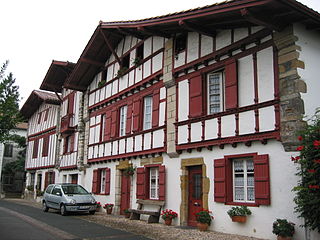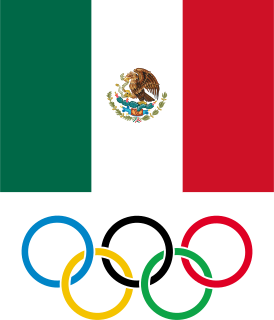
In some cultures, a surname, family name, or last name is the portion of one's personal name that indicates their family, tribe or community.
BH, Bh or bh may refer to:
Spanish naming customs are historical traditions that are practised in Spain for naming children. According to these customs, a person's name consists of a given name followed by two surnames. Historically, the first surname was the father's first surname, and the second the mother's first surname. In recent years, the order of the surnames in a family is decided when registering the first child, but the traditional order is still usually chosen. Often, the practice is to use one given name and the first surname most of the time ; the complete name is typically reserved for legal, formal, and documentary matters. Both surnames are sometimes systematically used when the first surname is very common to get a more customized name. In these cases, it is even common to use only the second surname, as in "Lorca", "Picasso" or "Zapatero". This does not affect alphabetization: "Lorca", the Spanish poet, must be alphabetized in an index under "García Lorca", not "Lorca" or "García".
In the Western tradition of surnames, there are several types of double surname. If the two names are joined with a hyphen, it may also be called a hyphenated surname. The word "barrel" probably refers to the barrel of a shotgun, as in "double-barreled shotgun".

Palazzo Labia is a baroque palace in Venice, Italy. Built in the 17th–18th century, it is one of the last great palazzi of Venice. Little known outside of Italy, it is most notable for the remarkable frescoed ballroom painted 1746–47 by Giovanni Battista Tiepolo, with decorative works in trompe-l'œil by Gerolamo Mengozzi-Colonna.
A Portuguese name is typically composed of one or two given names, and a number of family names. The first additional names are usually the mother's family surname(s) and the father's family surname(s). For practicality, usually only the last surname is used in formal greetings.

Sanbenito was a penitential garment that was used especially during the Spanish Inquisition. It was similar to a scapular, either yellow with red saltires for penitent heretics or black and decorated with devils and flames for impenitent heretics to wear at an auto da fé.

Beistegui Hermanos S.A. (BH) is a Spanish bicycle manufacturer founded in 1909 to make guns. In 1919, after World War I, BH began making bicycles. Prior to the Spanish Civil War, Beistegui Hermanos also produced firearms, specifically copies of the Ruby pistol and Mauser C96.
Radio México Internacional is a Mexican government-run radio service based in Mexico City. It broadcast as a shortwave radio station with the broadcast callsign XERMX-OC from 1969 to 2004, and was relaunched as an Internet-only radio service in 2011. Since 1983 it has been under the control of the Instituto Mexicano de la Radio (IMER). The -OC suffix is from onda corta, Spanish for "short wave".

Basque surnames are surnames with Basque-language origins or a long, identifiable tradition in the Basque Country. They can be divided into two main types, patronymic and non-patronymic.

The Château de Groussay is located in the town of Montfort-l'Amaury, in the Department of Yvelines, west of Paris, in France. The Château was built in 1815 by the duchesse de Charest, a daughter of Louise Elisabeth de Croÿ-Havré, marquise de Tourzel, the governess of the royal enfants de France of Louis XVI and Marie Antoinette.

Carlos de Beistegui e Yturbe, also known as Charlie de Beistegui, was an eccentric French-born Spanish multi-millionaire art collector and interior decorator who was one of the most flamboyant characters of mid-20th-century European life. His ball at the Palazzo Labia in Venice in 1951 is still described as "the party of the century". Beistegui was often referred to as "The Count of Monte Cristo".
A nobiliary particle is used in a surname or family name in many Western cultures to signal the nobility of a family. The particle used varies depending on the country, language and period of time. However, in some languages the nobiliary particle is the same as a regular prepositional particle that was used in the creation of many surnames. In some countries, it became customary to distinguish the nobiliary particle from the regular one by a different spelling, although in other countries these conventions did not arise, occasionally resulting in ambiguity. The nobiliary particle can often be omitted in everyday speech or certain contexts.
The naming customs of Hispanic America are similar to the Spanish naming customs practiced in Spain, with some modifications to the surname rules. Many Hispanophones in the countries of Hispanic America have two given names, plus a paternal surname and a maternal surname.
Tepeaca Municipality is a municipality in Puebla in southeastern Mexico. Tepeaca is located 35 km (21.75 mi) from Puebla City and is the municipal seat of the municipality of the same name. Its name comes from a Spanish variant of "Tepeyacac" composed of the Nahuatl words tepetl ("hill") and yacatl. It has been called Tepeaca de Negrete as it was the birthplace and hometown of General Miguel Negrete Novoa. Along with Tecali Herrera, he extracted the onyx and marble. The town was originally founded by Hernán Cortés as Segura de la Frontera.

The Mexican Olympic Committee (COM) is the organization that represents Mexican athletes in the International Olympic Committee (IOC), the Pan American Games and the Central American and Caribbean Games. It was created and formally recognized by the IOC in 1923. The organization is currently directed by Carlos Padilla Becerra.
Jean Babelon was a 20th-century French librarian, historian and numismatist.

Portrait of the Marquise de la Solana is a 1795 full length portrait by Francisco Goya of his friend the Marquise de la Solana. It now hangs in the Louvre in Paris, to which it was given in 1953 by Carlos de Beistegui.
Miguel de Beistegui is a continental philosopher and Professor of Philosophy at the University of Warwick. He is known for his expertise on Heidegger's thought.








